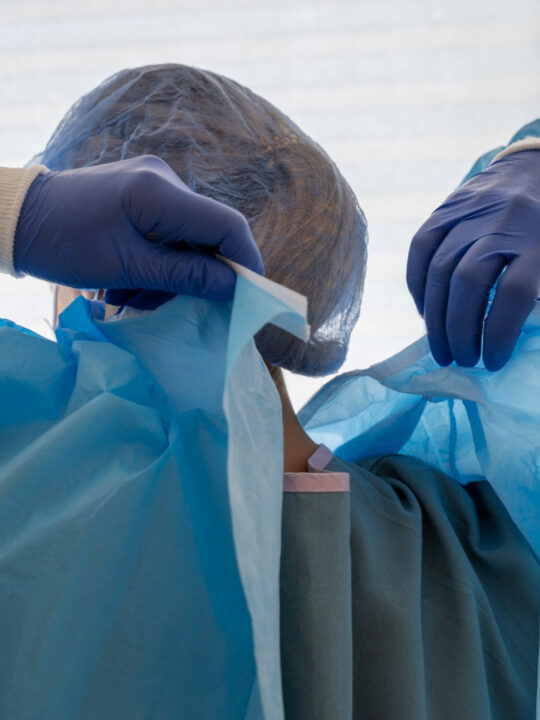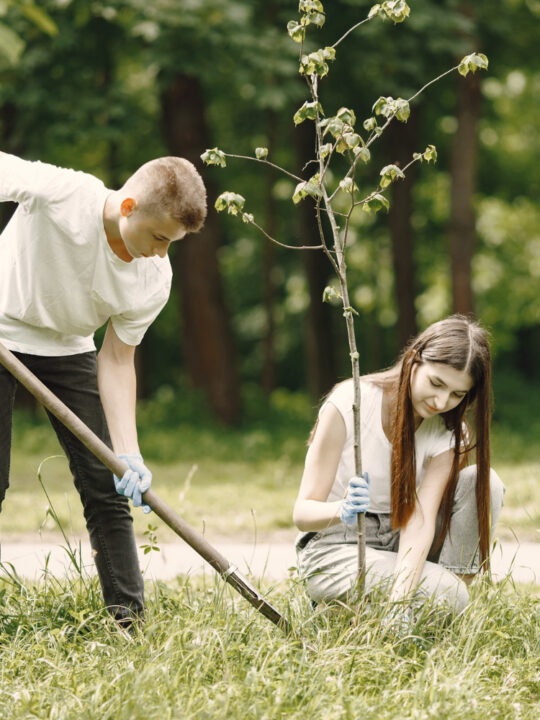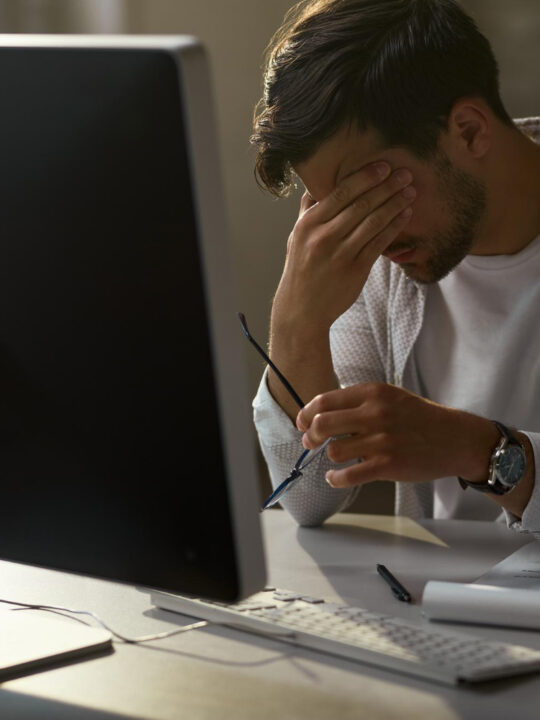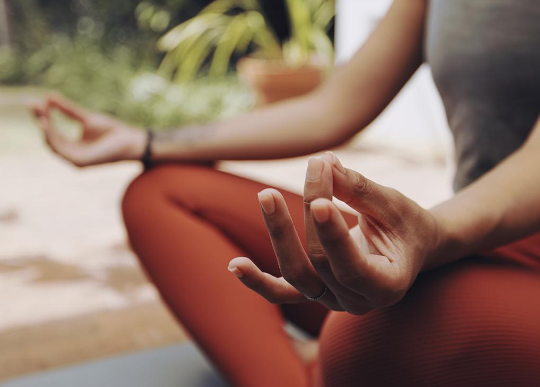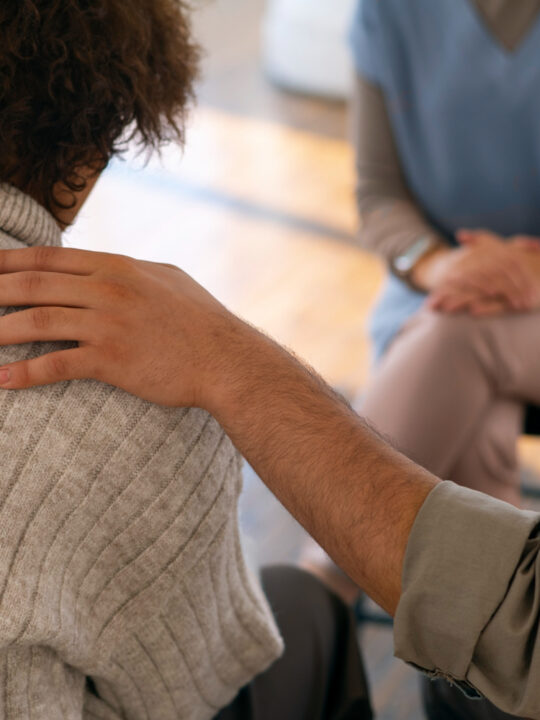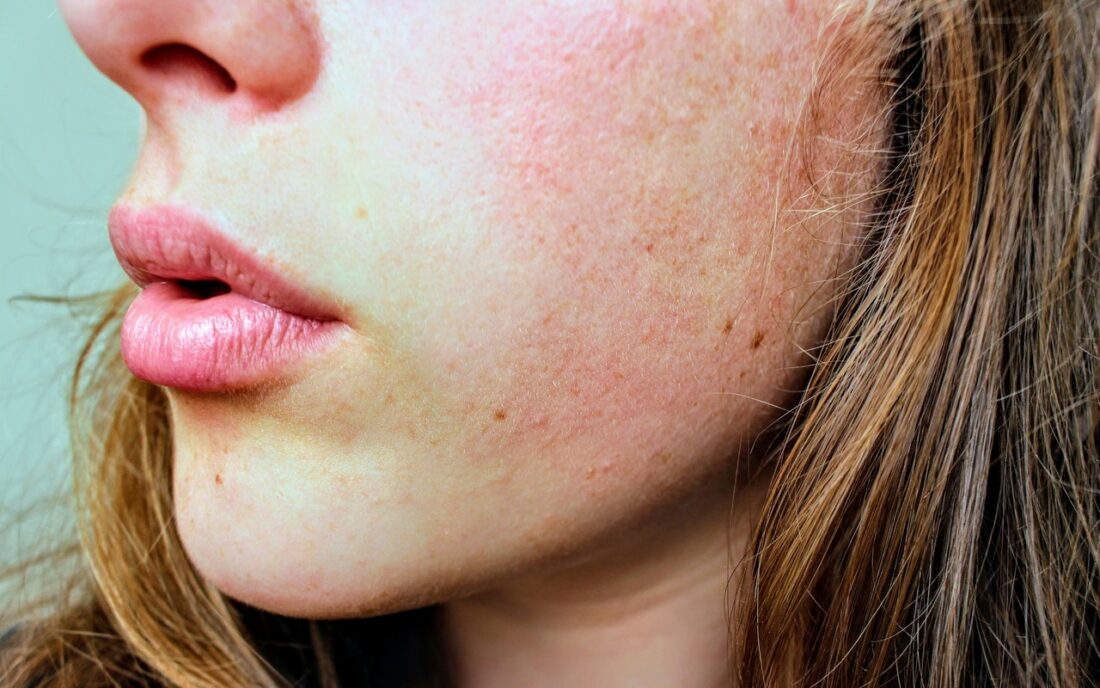 As the largest organ in the human body, the skin plays a crucial role in protecting the body. It shields the body from harmful ultraviolet rays, toxins, microorganisms, variations in temperature, and pollutants. It also protects the body from damage to the internal organs, bones, and muscles. Another function the skin performs is that it regulates different aspects of physiology, such as fluid balance. Therefore, it is vital to ensure that the skin is adequately taken care of.
As the largest organ in the human body, the skin plays a crucial role in protecting the body. It shields the body from harmful ultraviolet rays, toxins, microorganisms, variations in temperature, and pollutants. It also protects the body from damage to the internal organs, bones, and muscles. Another function the skin performs is that it regulates different aspects of physiology, such as fluid balance. Therefore, it is vital to ensure that the skin is adequately taken care of.
When the skin is not well-maintained, it may result in various skin diseases and conditions. One of such skin conditions is Rosacea. This skin condition is usually mistaken for an allergic reaction, eczema, acne or other skin conditions. Rosacea seems to be common among fair-skinned middle-aged women, and it is reckoned to affect about 14 million Americans.
How then do you deal with Rosacea? There is no known cure for the skin condition. However, there are several Rosacea treatments that can be used to relieve its symptoms. Keep reading to learn about Rosacea causes, its symptoms and the best treatment for Rosacea.
Table of Contents
- 1 What is Rosacea?
- 2 How does Rosacea occur?
- 3 Types of Rosacea
- 4 What are the causes of Rosacea?
- 5 Symptoms of Rosacea
- 6 How is rosacea diagnosed?
- 7 Treatments for Rosacea
- 8 Alternative rosacea treatments include:
- 9 Homemade remedies for rosacea
- 10 Living with rosacea
- 11 Tips for coping with rosacea
- 12 The best treatment for rosacea
- 13 How to prevent Rosacea
What is Rosacea?
Rosacea is a common and chronic skin condition that causes small red bumps on the skin. It may also cause small blood vessels in the affected area to become bigger and more visible. It is an inflammatory skin condition that mostly affects the face, particularly the cheeks, forehead, nose and the chin. Rosacea is a skin disease that mostly affects adults. It is particularly common among Europeans. This skin condition is not infectious or contagious.
Rosacea is also known as adult acne or acne rosacea. Although it is similar to acne, unlike acne, rosacea does not cause blackheads. Unlike acne which affects all kind of people, rosacea affects mostly fair-skinned people. Some famous people with rosacea include Princess Diana and Bill Clinton.
How does Rosacea occur?
Rosacea occurs as a result of the dilation of the blood vessels in the skin. It usually appears on the face, but in extreme cases, it may appear on the neck, chest, ears, and scalp. Although the exact cause of rosacea is unknown, several things could trigger it. The onset of this skin condition often begins with flushing episodes. Following these episodes is the appearance of small red bumps on the skin which are usually filled with pus.
Types of Rosacea
There are different types of rosacea that affect the skin. However, it is settled among dermatologists that there are four main types of rosacea. They are:
Ocular Rosacea: It mainly affects the eyes and the eyelids. It is characterized by dry, bloodshot and itchy eyes, with accumulations of crust and scale.
Papulopustular Rosacea: It results in small, red bumps and pustules on the face which resembles acne.
Erythematotelangiectatic Rosacea: This is the most common form of rosacea. The main symptoms of this type of Rosacea are redness of the skin, dilated blood vessels, and blushing.
Phymatous Rosacea: This is characterized by the thickening of the skin, especially on the nose. The nose becomes bulbous and hard. This thickening makes the skin bumpy in texture. This type of rosacea may lead to rhinophyma.
What are the causes of Rosacea?
Although the exact Rosacea causes are mostly unknown, doctors and researchers have been able to pinpoint various risk factors. These risk factors are a combination of environment and hereditary conditions. They include:
- Genes – Rosacea is often inherited. Being a fair-skinned European and having family members with rosacea makes you susceptible to rosacea.
- Bacteria – Research suggests that H. pylori, which is found in the gut can raise the amount to gastrin in the body. Gastrin is a digestive hormone, and an increase in its quantity in the body may cause the skin to look flushed.
- Mites – Demodex folliculorum is a tiny insect that lives on the skin. Although it is not harmful, when this mite occurs in large numbers, it could irritate the skin. This irritation could, in turn, result in rosacea.
- Blood vessel dilation – When there is a condition that causes the blood vessels to dilate, it makes a person prone to rosacea. An example of a condition that can cause dilation of the blood vessels is sun damage.
Other risk factors include being middle-aged, being female, menopause, and smoke.
Rosacea can be aggravated by:
- Alcohol consumption
- Temperature extremes
- Cosmetics
- Intense exercise
- Stress
- Emotional upsets
- Sun exposure
- Spicy foods
- Hot drinks
- Drugs that cause the blood vessels to dilate
It is pertinent to note that poor hygiene does not notably cause rosacea.
Symptoms of Rosacea
Symptoms of rosacea may substantially differ from one person to the other. However, some symptoms appear to be common among people who suffer from it. They are:
1.Persistent redness of the skin: This is also known as erythema, and may appear as sunburn or blushing. It often accompanies flushing episodes and is as a result of the dilation of blood vessels.
2.Flushing: Many people with rosacea tend to flush and blush frequently. It is an early sign of this skin condition. Flushing may last for over five minutes at a stretch and is often described as uncomfortable. It may spread from the face to the neck and the chest.
3 Skin thickening: The skin (around the nose especially) may thicken and become hard. This thickening is known as rhinophyma and is caused by excess tissues. It is more common in males than in females.
4.Red pimples and bumps: Small pus-filled bumps and pimples may appear on the skin. Stinging and burning sensations may also accompany them. Unlike acne, blackheads are not associated with rosacea.
5.Dilated blood vessels: Rosacea causes the blood vessels on the skin to enlarge and become more visible. This is known as telangiectasia. The skin often appears red and blotchy as a result.
6.Eye irritation: It is also known as ocular rosacea. Many people with rosacea may have watery, bloodshot eyes. The eyelids may also become swollen and red, with accumulations of scale and crust. This condition could also lead to conjunctivitis. The blood vessels in and around the eyes may also become more visible.
In severe cases, rosacea may lead to the damage of the cornea, and blindness, without medical intervention.
Other symptoms of rosacea include dry and rough skin, larger pores, a burning sensation, and small cysts on the skin. The symptoms of rosacea may appear and disappear, flaring up for a while before fading away. Furthermore, these symptoms tend to evolve in stages.
How is rosacea diagnosed?
There is no special test to diagnose rosacea. Doctors examine the skin and consider the symptoms suffered by the patient. In some situations, the doctor may carry out tests for other skin conditions like eczema to rule them out. This elimination process may be used because some other skin conditions have symptoms similar to rosacea.
Treatments for Rosacea
Rosacea treatments may vary from one patient to the other. Thus, doctors and dermatologists ensure that rosacea treatments are tailored to each patient’s particular case. Although rosacea is incurable, its symptoms can be managed with the right treatment. Popular rosacea treatments include:
1. Oral antibiotics: They produce fast results. They are prescribed because they are anti-inflammatory drugs. Examples include tetracycline, minocycline, doxycycline, and erythromycin.
2. Topical medications: They are often combined with oral antibiotics. They help to reduce redness and inflammation. Topical medications are usually applied to the skin, once or twice daily. Examples include azelaic acid, tretinoin, and benzoyl peroxide.
3. Blephamide: It is used to manage the symptoms of ocular rosacea. It is a type of steroid eye drop which is to be applied daily for a specific period.
4. Cleansers: A doctor may prescribe them, or they may be purchased over the counter. They are used to relieve and control mild symptoms of rosacea. They are usually sulfa-based washes or benzoyl peroxide washes.
5. Isotretinoin: It is also known as Accutane. It is an oral medication used for extreme cases of rosacea, especially where other rosacea treatments have failed. This is where it is quite resistant and severe. Patients are placed on a daily dosage of Isotretinoin for a period of four to six months. It is a drug that reduces the amount of oil produced by the sebaceous glands in the body. The body reacts to isotretinoin the way it would to Vitamin A because it is a vitamin A derivative.
However, patients who are pregnant must take precautions as they use the drug because it harmful to unborn babies. Common side effects of isotretinoin are sensitivity to sunlight, headaches, dry eyes, and nosebleed. Isotretinoin is a drug that must be prescribed by a physician because it can produce serious side effects.
Alternative rosacea treatments include:
1.Daily facial massage: It may help to reduce inflammation and swelling of the skin.
2.Laser treatment: This treatment uses intense pulsated light to shrink visible blood vessels in the skin. Only a trained medical aesthetician can perform this treatment. Laser treatment may also be used to correct the disfiguration of a bulbous nose. Side effects include discomfort, bruising, swelling and crusting.
3.Glycolic-acid peels: They may help to relieve and control the symptoms of rosacea. These peels are applied to the affected area for about two to five minutes bi-weekly or monthly. This treatment must be carried out by a dermatologist because not every patient can tolerate it. Its side effects include burning, irritations, itchy and a stinging sensation.
4.Photodynamic therapy: It is one of the new rosacea treatments which aims at reducing inflammation. It is a photosensitizer liquid that is applied to the skin and then activated by light. Blue light and aminolevulinic acid could be used for this treatment.
A dermatologist must carry out this kind of treatment. The treatment could last for over an hour and a half. Patients may experience mild discomfort during the procedure. Once the treatment has been performed, the patient is expected to avoid sunlight for three days, at most.
5.Plastic surgery: This could be effective for those with rhinophyma (thickened skin). Where the skin has because enlarged due to excess tissues, the patient may be advised to consider plastic surgery.
Homemade remedies for rosacea
Precautions must be taken before one can apply a homemade treatment to manage the symptoms of rosacea. It is also essential to consult a trained medical aesthetician before using a homemade remedy. Natural homemade remedies for rosacea include:
1.Green tea cleanser: Green tea may help to reduce inflammation and redness caused by rosacea
2.Dilute vinegar cleanser: Vinegar helps to cleanse the skin and keep it free from bacteria. However, due to the hyper-sensitivity rosacea causes, it is advisable first to apply vinegar on a small section. This initial application will help gauge the skin’s tolerance for vinegar.
Living with rosacea
The effects of rosacea on a person’s life depend on how severe its symptoms are. Living with rosacea may be embarrassing and can lead to low self-esteem. It could also lead to anxiety and depression, mainly where the symptoms are severe. Confiding in a trusted person about these feelings could be quite helpful. Also, joining a rosacea support group whether online or somewhere around you would also be encouraging.
If you have been diagnosed with rosacea, make regular appointments with a medical aesthetician. Once rosacea is diagnosed, early treatment is recommended to control its symptoms. Your dermatologist may prescribe drugs to help manage or eliminate the symptoms.
Tips for coping with rosacea
As already stated, there is no known cure for rosacea; however, its symptoms can be managed. In controlling these symptoms, it is essential to limit exposure to any risk factor of rosacea. It is also crucial to avoid anything that can worsen the situation. The following tips would be useful:
1.Know your triggers: It is pertinent to be familiar with the things that could make rosacea flare. Once you know these triggers, you would be able to avoid being exposed to them. Different people have different triggers, so you need to be sure about your own. It is advisable to keep a record of daily events or activities that could be associated with flare-ups. Common triggers include:
- Changes in temperature
- Vigorous exercise
- Consuming hot drinks and spicy foods.
2.Always protect your skin from the sun: People with rosacea usually have skins that are hypersensitive to sunlight. Precautions to take to limit exposure to sunlight include:
- Avoiding the sun when it is at its peak (usually midday)
- Wearing sunglasses and sun-protective clothes
- Applying a broad-spectrum sunscreen with an SPF (sun protection factor) of at least 15 daily
- Protecting the skin with a ski mask or scarf during winter
- Avoiding facial products that contain alcohol or any chemical that can irritate your skin
- Using a moisturizer on sore skin
- Staying under a shade when outdoors
- Using gentle skincare products
- Installing a window film for the car that blocks out ultraviolet rays
- Putting on a wide-brimmed hat to protect the face and neck from sunlight.
3.Reduce stress: Stress has been known to cause rosacea flare-ups. Therefore it is vital to keep stress levels under control and practice stress management techniques. In managing stress, it is essential to eat a balanced diet, exercise regularly and sleep soundly.
4.Use makeup products with green tints: Although they will not help to relieve the symptoms of rosacea, they can be used to cover the skin.
The best treatment for rosacea
Although rosacea is an incurable skin condition, different treatments could be used to control its symptoms. The best treatment for rosacea is laser or light-based therapy. This treatment has proven to be quite useful with long-lasting results. It is known to have wholly removed redness of the skin for several years. When laser treatment is done correctly, it shrinks the dilated blood vessels and makes them less visible. Laser treatment could also be used to remove thickened skin by laser resurfacing.
Different types of lasers could be used for this treatment. Examples include the pulsed-dye laser and the dual wavelength laser. A combination of different lasers may even yield more results.
Depending on how severe the symptoms are, patients may need a series of laser treatments before they can see tangible results. Treatments are often done monthly, and their effects may last up to five years. A downside to laser treatments is that they are quite expensive. They can cost as much as six hundred dollars per session. However the cost is well worth the results of the treatment.
When laser treatment is done by a professional, the side effects are usually mild and temporary. Such side effects include a small rash, slight discomfort, and itchy skin. These side effects typically fade after two weeks. Laser treatment rarely leaves a scar on the skin.
Due to the fantastic results it produces, laser treatment can be said to be the best treatment for rosacea.
How to prevent Rosacea
Rosacea is not a skin condition that can be prevented. However, it is possible to limit one’s exposure to its risk factors. Once a person has been diagnosed with rosacea, it is advisable to avoid things that aggravate this skin condition.
Additionally, it is recommended that you book a session with qualified medical aestheticians. They will be able to adequately determine the best course of treatment for you.
